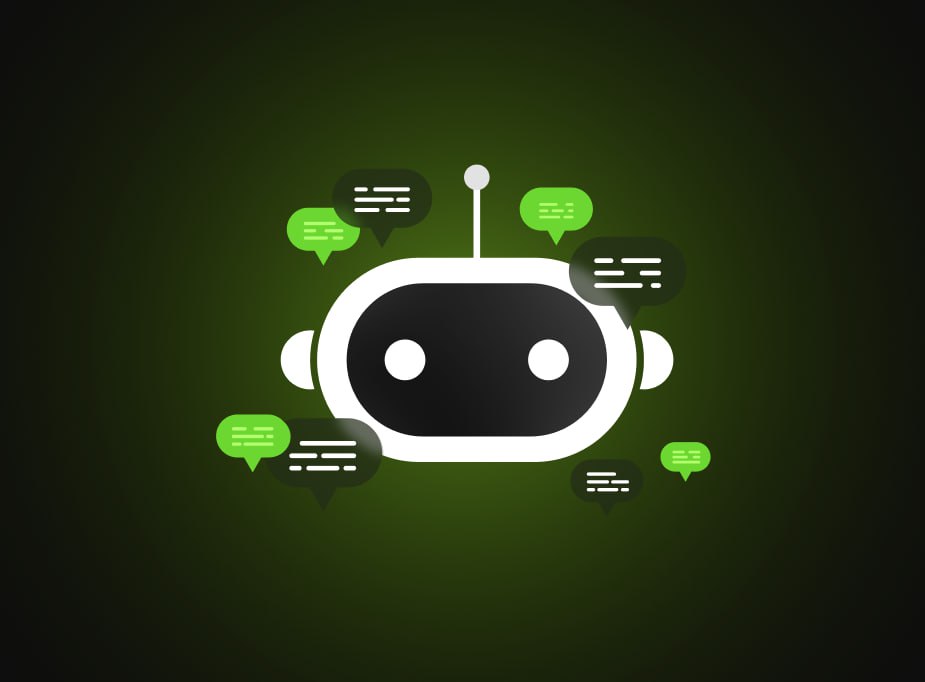In today's age, business aims for the self-sufficiency of production processes and the elimination of human error. What it needs is intelligent automation through digital solutions. A useful tool for this has become the chatbot.
Let's look in detail at what a chatbot is, the amazing things it is capable of, and how to develop a program tailored to a company's individual goals.
What is a Chatbot

A chatbot is a software agent capable of interacting with people and integrating with systems. The right functionality and algorithm will make it the employee of the month. It becomes the ideal staff member who doesn't need to eat, drink, or go home. Additionally, the digital manager has hardware-level stress resilience, an ability to ignore profanity, and phenomenal memory.
The software agent provides users with answers to questions, performs specific tasks, and helps solve problems. It handles a large stream of requests and also provides round-the-clock dialogue with clients without the need for continuous human intervention.
The chatbot can be integrated into any online resource: marketplace, CRM, messenger, web application, and more. Depending on the complexity of the system, you can interact with it through buttons, text, and even voice. It will respond according to a pre-prepared script and with consideration of machine learning if developed using Natural Language Processing (NLP).
You have already encountered such an assistant when contacting a bank's customer service or saying "Alexa, turn on…". However, this is far from all the fields in which it is highly productive.
Where and Why Chatbots Are Needed

Chatbots are becoming increasingly popular and in-demand in various industries. They improve service and impress audiences with the speed of information retrieval. This is crucial in businesses that deal with high customer flow.
Retail
A chatbot is a favorite type of consultant for shoppers. It stays silent until asked and offers precisely what you're interested in. It quickly analyzes criteria, points out discounts and promotions, and places orders. At the same time, it processes data and formulates personalized offers based on interaction history.
Cafes and Restaurants
The online administrator in the form of a chatbot will reserve a table, offering choices for time, location, and additional criteria. It will remind you about your reservation by sending a notification, present a virtual menu with detailed dish descriptions, process payment, send readiness confirmation, and discreetly collect feedback.
Tourism
A chatbot will find suitable hotels, excursions, and tickets as per requirements. It will serve as a guide and offer recommendations on local venues to visit. It will provide weather conditions and popular routes, send promotional newsletters about last-minute deals, and place preliminary tour orders.
Healthcare
The chatbot will provide patients with quick access to information about services, specialists, appointment schedules, and conditions. It will book an appointment at a convenient time and send a pre-appointment reminder. It can access medical history, test results, and more, giving health advice based on the client's data.
Legal Activities
The chatbot will reduce the time for initial consultation by asking standard questions for identity verification, determining the reason for the inquiry, and establishing an understanding of the case. It will offer profiles of specialized professionals and book appointments with lawyers or attorneys. It will answer general legal questions and clarify personal queries regarding collaboration with the firm.
Automotive Industry
The chatbot informs customers about car models, specifications, prices, and availability in showrooms. It will schedule test drives, suggest related products and services. Like a diligent auto service employee, it will remind car owners about maintenance, oil changes, and other regular vehicle services.
PR
Chatbots can identify user preferences through surveys and offer participation in giveaways. They track queries and responses to send personalized newsletters about new releases, promotions, and discounts. With a well-chosen TOV, it can turn cold leads into hot ones. Public relations specialists use it as a powerful marketing tool.
This is a short list of areas where chatbots are already being used. They also include telecommunications, HR, real estate, insurance, and much more. Such demand is logical, as the software agent improves the customer experience. It reduces the load on employees and provides round-the-clock access to information for users. If you need an assistant with a simple response scenario, ready-made solutions in the form of constructors will suffice. However, more serious systems with data storage and processing, scalability, machine learning, and personalized approaches should be entrusted to developers.
Chatbot Development

Custom chatbot development is the creation of an IT product that precisely meets the company's requirements and ensures data security. The set of functions for such a virtual employee depends on specific business needs and is implemented in stages.
Goal Definition
You can't just randomly want to have a chatbot because it's trendy. A list of business tasks that the development will address must be prepared in advance. This is an important point, as the subsequent choice of functionality is based on the created backlog. For this, a business analyst is usually involved in the project, who identifies the company's pain points and necessary processes for automation. Without a goal, you will end up with a weak product. It will require frequent modifications, or may even have to be "discarded".
Platform Choice
A lot depends on where the chatbot will be located. For example, the appearance of the system and the choice of the technology stack for its creation. Decide in advance whether you need something universal for multiple platforms or only an implementation on your own. Think this through and communicate it to the developers to avoid having to redo what's already done.
Appearance and Communication Style
A chatbot is an interlocutor without a physical body. It also repels or attracts with its manner of communication and interface. The character of the virtual employee, their speech style, and a friendly or business tone should be carefully considered. This is done with a focus on the target audience of users. Consider whether or not natural language processing is needed for the bot's further training.
Step-by-Step Scenario and Prototype
Developing dialogue logic, selecting answers to questions, and solving non-standard situations is a lengthy sprint, at the end of which a clear image of the future chatbot will emerge. This is exactly how the interaction will occur in reality. Pay close attention to this stage to coordinate all the nuances.
Programming and Integration
At this stage, business involvement is minimal. Code is written and reports are compiled based on the selected features. External services are connected, such as for product search in a store or for payment processing. A database is created or an existing one is used to store the information required for the chatbot's operation.
Testing
If no tester is involved in the project, you will need to verify the chatbot's functionality yourself. Pay special attention not only to adherence to the script but also to the accuracy of the responses. Go through non-standard situations. For better results, you can involve third parties who are unfamiliar with the program's logic. They will provide a more objective review and point out any noticeable shortcomings, if any.
Implementation and Debugging
The final stage involves deploying the chatbot on selected platforms. Monitor user feedback, organize timely technical support, and make necessary adjustments to your virtual specialist. Continually improve scenarios to attract and accommodate a larger audience.
Developing a chatbot tailored to your business needs is a complex task that requires experience, skills, and competencies. However, it fully justifies itself. You "hire" an employee who will simplify work for others by taking on their responsibilities. They are not distracted, do not take up space, and are ready to assist users 24/7. If you want such a service, please contact us for "Chatbot Development, Artificial Intelligence (AI)".





